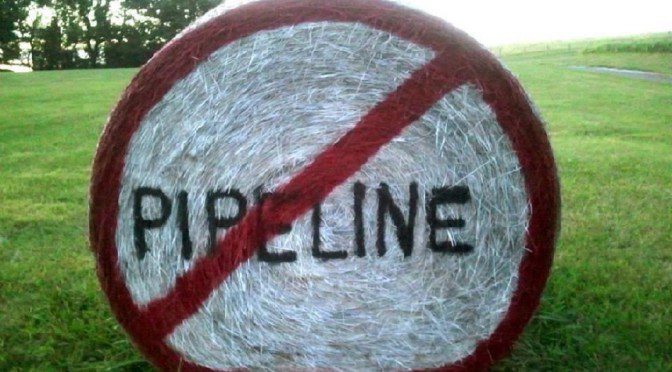
How Pipelines are Hurting Wildlife
A pipeline undoubtedly has a significant effect on the areas which they cover, affecting the landscape as well as the people, animals, and natural environment around them. The Mountain Valley Pipeline (MVP) construction over the past several years has raised a variety of unique and salient questions about its impacts, which have included river and stream pollution, forest clearing, and impacts on various wildlife species. Several scientific studies have demonstrated the link between pipeline construction/operation and decreasing biodiversity and ecosystem health. To find out more about how pipelines are hurting wildlife and affecting habitat connectivity among other things, keep reading!
Check out our work to stop the Mountain Valley Pipeline.
How A Pipeline Hurts Wildlife
Linear infrastructure projects like pipelines are responsible for habitat fragmentation and loss for a variety of different species. This problem is generally easy to conceptualize, since pipelines cut across landscapes, severing previously connected areas of land and changing the way species populations move across that landscape. Pipelines can serve as a physical and visual barrier to animals, while also changing the structure of local plant communities and affecting plant mortality rates (source). Changes in local plant communities will then radiate up the food chain, affecting local wildlife as well. Other impacts include damage to bird populations and harmful impacts on benthic communities (deep-dwelling water species). Pipelines are only increasing worldwide, as pipelines for transporting natural gas, crude oil, petroleum products and water extend more than 3,560,671 km across 124 countries (source). It is thus more important than ever to understand the multifaceted impacts that pipelines have not just on surrounding communities, but also neighboring habitats.
Mitigation strategies can include changing the development of infrastructure projects (using different build techniques, reducing the width of the pipeline), or more simply, not building the proposed pipeline. In the case of the MVP’s construction, which in the words of Wild Virginia’s David Sligh is a “dinosaur that needs to go extinct”, halting construction of the pipeline is the obvious solution. The pipeline’s construction has already been met with an onslaught of opposition from environmental groups including Wild Virginia. MVP’s repeated environmental violations have proven time and time again that the project is volatile to the surrounding landscape; damage to habitat connectivity is just one facet of MVP’s many issues.
What Can YOU Do?
By joining and supporting our work at Wild Virginia, you can be a part of the fight to stop the MVP construction, and help pipelines from hurting wildlife. In addition, Wild Virginia is a part of the VSWCC (Virginia Safe Wildlife Corridors Collaborative), which works to help increase habitat connectivity and reduce animal-vehicle collisions, another great source of biodiversity loss. Your support and willingness to help Wild Virginia in all of our efforts makes all of the difference in our work!